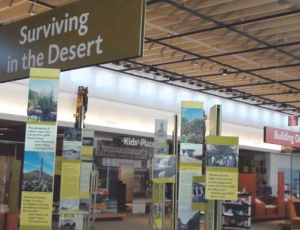Above and Beyond Two owners of large tower crane fleets cut risks by stepping up safety programs
Hanging more than 200 ft over a jobsite in downtown Kansas City, Mo., James Hague doesn’t seem to notice the tiny people and equipment below his feet.


The senior technician intently works a dial gauge that measures the play in a crane’s turntable—the giant platform that rotates the jib. “A bearing could go bad,” says Hague, suspended from a full-body harness. “And that’s something we want to know before the top falls off.”
Although this vertigo-inducing procedure is not required by law for a routine inspection, it is now standard practice at Kansas City, Mo.-based J.E. Dunn Logistics Inc., which is stepping up its safety program in an effort to cut risks—especially those related to hoisting equipment.
After Hague performs an inspection for one of the company’s cranes, he climbs down, sits in his pickup truck and enters his findings in a smart phone or laptop. In seconds, the electronic report shoots off to a file server in the home office.
J.E. Dunn’s safety managers can then pull reports on the company’s 31 tower cranes from anywhere in the U.S., using a secure Internet site. In the past, Hague and the firm’s other half-dozen inspectors would fill out a paper eventually filed away in a cabinet.
“I can tell you that we have had a very, very aggressive inspection program for years,” says Dan Euston, president of general contractor J.E. Dunn Construction, the logistic unit’s parent. “It’s just becoming more formalized and stringent as we’ve started sending more tower cranes around the country.”
After a spate of catastrophic crane accidents that rocked the construction industry in 2008, contractors like J.E. Dunn are boosting their quality checks—and trying to go above and beyond current safety standards for cranes. “We felt that that was an area of the industry that had risk,” Euston explains.
Morrow Equipment Co., a large crane-rental company in Salem, Ore., is doing the same. Morrow is putting its workers through a newly built, 9,000-sq-ft training center finished last summer.
Among the classes are seminars on fall protection, rigging, lockout/tagout and electrical protection—fundamental training in areas that clients, regulators and insurers have tagged as risky. Nearby, at the company’s maintenance shop, a new system of red, blue and green stickers—which inspectors must sign and date—indicates whether or not crane parts are safe to go into the field.
We visited both J.E. Dunn and Morrow this past fall to see how they are changing. Both companies are improving quality control (QC)—internally tracking inspections, maintenance and repairs—while and pairing it more aggressively with quality assurance (QA)—proving to the outside world that you did what you say you did. “We have to be diligent in maintaining our equipment and erecting equipment that we truly know—not that we believe—but that we truly know is safe,” says Peter Juhren, Morrow’s corporate service manager. “The accountability is the largest part of this new process.”
Plugged In Kansas City is well known for blues, jazz and barbecue. But local residents also are quite familiar...
...with Dunn’s fleet of royal-blue cranes towering above the skyline, It is believed to be the country’s largest fleet of tower cranes owned by a general contractor. Made by Spanish manufacturer Linden Comansa, the iconic cranes have a signature “flat top” design that uses no overhead pendants to support the jib.


What locals don’t notice is the invisible database that now connects these cranes. Dunn began the initiative began three years ago for general safety compliance and expanded it last year for the hoisting fleet.
“In the past, when technicians go out to inspect a crane, they have a paper report that they fill out, and basically it’s filed away,” says Cory Hall, safety manager of J.E. Dunn Logistics, adding that the firm inspects its tower cranes every six weeks or 300 hours. Federal guidelines only require annual inspections. The company also performs nondestructive testing of structural components after each project.
Dunn tracks its safety compliance with a software program called DBO2. In 2008, it asked the program’s San Carlos, Calif., supplier to tailor the software for use with the hoisting fleet. “We can pull statistics and data, everything from fall protection to crane inspection,” says Hall. “Once a crane is moved, those statistics…follow that crane to the next job.”
The equipment is hooked up to mobile GPS trackers, too. That may sound especially strange for tower cranes—which typically work from a stationary position. But the tracking devices monitor essential data, such as load testing. Every day, Dunn requires its operators to test the crane to 110% of maximum capacity as part of their startup routine. Industry standards only require this procedure when the crane is first set up.
It works like this: A rigger on the ground hooks up a test block that weighs the same at the crane’s maximum rating. Tethered to it is a smaller “pup” weight that adds 10% more. The operator lifts the test weight, and when the chains pull tight on the pup, the crane’s limit switch trips, shutting it down. If not, the operator knows something is wrong.
The method is controversial among some crane experts because it potentially exposes the crane to premature fatigue. But it is perfectly legal as long as the manufacturer does not prohibit it. Operators say they like the assurance: “If anything [bad] happened, it would be on me,” says Terry Pierce, a crane operator for Dunn. “You don’t get any second chances.”
E-mails fire away to Hall’s staff whenever a switch is tripped—so they know if an operator does not perform daily load tests. “When the contact goes in, it sends a signal to the GPS system,” says Hague. Only technicians are allowed to adjust the switches, which are calibrated for every job. If an operator tries to cheat, Hall says, “It’s an automatic no-questions-asked [situation]…that operator is dismissed within the hour.”
Tagged Out With 550 machines, Morrow is believed to run the largest rental fleet of tower cranes in the U.S. But even so, Morrow’s management team says the company could be doing more to improve safety tomorrow.
“We have to change as an industry,” explains Juhren, who also chairs the American National Standards Institute’s B30.3 committee on tower cranes, which publishes best practices for those machines. “For years, it was just assumed that we did what we said we had to do.”
Years ago, Morrow already had developed a QC program—an internal mechanism for tracking its crane parts. “But we never really had a QA program,” says Juhren.
In 2008, the company developed a system of blue, red and green tags that inspectors must sign...
...and date. Blue means the part has been visually inspected and is ready for further tests. Red means it failed an inspection or test. Green means it is safe and ready to ship to a job.


Morrow’s QC testing program began about six years ago. Every time a crane comes back from a rental, it gets a top-down inspection. In New York and California, where it is required by law, next comes a round of nondestructive tests: Tower sections are tested using the magnetic-particle method, which exposes bad welds or cracks unseen to the naked eye. It tests bolts using the ultrasonic method, which also detects breaks in the material. In other jurisdictions, Morrow tests its bolts every five years, and it tests sections only after structural repairs are made.
Interestingly, Liebherr Group, the German crane manufacturer that supplies the most equipment to Morrow, only requires a visual inspection of these parts, Juhren says, adding that it is good to go “above and beyond” the rules Another key risk that Morrow recently identified: electrical shock. Most tower cranes in the U.S. run on 480-volt electric power.
When workers need to service a crane, Morrow has for years required them to lockout and tagout the crane. If they need to follow live circuits, however, they now need to wear special gear. “The biggest issue is not necessarily electrical shock but what they call arc flash,” Juhren explains. “If you create a dead short with high voltage, it basically shoots out a fireball.”
Spurred on by its insurers after such incidents, Morrow this summer began requiring technicians to wear special clothes, face shields and gloves that meet National Fire Protection Association’s arc-flash standard, NFPA 70e. “We were unaware of the full requirements up until last year,” says Juhren. “That’s when we decided to start our campaign.”
Paying the Piper It may not be the best of times, but contractors like J.E. Dunn and Morrow are taking advantage of economic downtime to reinvest in safety—even as U.S. regulations lag behind. After all, only two states in the U.S. now require independent crane inspections. And these initiatives—mandatory or voluntary—are large costs in a time of little revenue. Dunn’s crane fleet is only running at about 35% of capacity at the moment—down from 90% a year ago.
“When the ‘blue iron’ isn’t up in the air, that is a definite contributing factor in the profitability of the company,” explains Hall. But a potential bright light in the recession is these companies’ renewed focus on QC/QA—a lack of which regulators have identified as a contributing factor in recent crane fatalities across the country. “In this economy, most companies are holding onto every penny that they can,” Juhren says. “We are actually spending money and putting money back into our fleet.”
Mandatory crane inspections will only continue to increase, he adds. Starting on Jan. 1, Washington became the second state to enforce a rule that requires most cranes to receive a top-to-bottom inspection each year from a licensed surveyor. California has a similar rule. Federal rules require annual inspections, but do not require the inspector to be licensed.
And an updated federal rule, which lays out new training guidelines for crane workers, is expected to be published this coming July. An earlier draft of the rule had a new requirement for inspectors to be “qualified” but not...
... yet certified or licensed. “The ultimate goal is to ensure that the cranes are safe to operate,” says Hector Castro, a spokesman for Washington’s Dept. of Labor and Industries, which regulates cranes in the state. “People are the key to tower crane safety,” Juhren adds.

Ironically, the stakes in the safety game usually go up after, not before, lives are lost. Washington initiated its rule in 2007 after a deadly tower crane collapse in Bellevue, attributed in part to a lack of inspections. California’s rule came on the heels of a deadly tower crane collapse in San Francisco in 1989.
Even companies like Morrow and J.E. Dunn are not immune to accidents. In 2008, OSHA slapped Morrow with five violations—including a “willful” fine—the agency’s most serious—after a tower section fell during a crane climb in Miami. Investigators found that the crew did not follow manufacturer instructions. Morrow eventually settled with OSHA, the terms of which included knocking the “willful” citation down to “serious.”
Recent crane accidents were not the sole reason behind Morrow’s new training, but they “influenced” the curriculum, Juhren says. “Nobody wants to be in the spotlight,” he adds. “But every once in a while, we get into the spotlight. And we have to dance.”
Likewise, in 1985, a derrick fatality on a J.E. Dunn project in downtown Kansas City forced the company to rethink its hoisting protocols, many of which are still in use today.
“It’s not about how much money we make or how tall we build the next building.” Hall says. “It’s not a success if someone doesn’t come home at the end of the day.”
